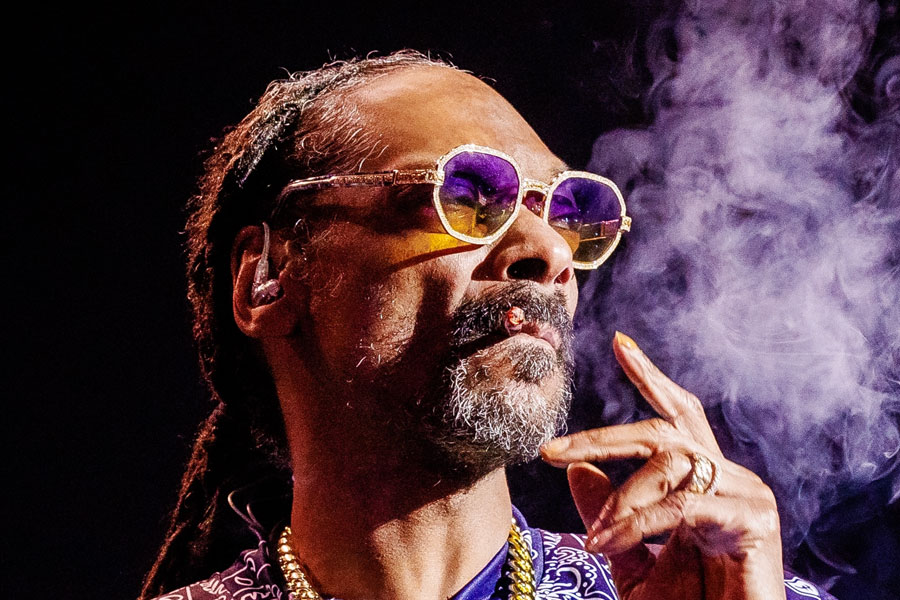Snoop Dogg “Scared to Go to the Movies” After He Says LGBTQ+ Stories Are Being Embedded into Kids’ Films

LOS ANGELES, CA – Rapper Snoop Dogg has stirred controversy with comments made on the It’s Giving podcast, where he recounted discomfort after watching Pixar’s Lightyear with his grandson. The child’s question – “How can two women have a baby?” – left the musician unprepared and uncomfortable, prompting him to describe himself as “scared to go to the movies” because of increasing representation of LGBTQ+ themes in children’s content.
The remarks, which challenged whether such themes should be included at a young age, quickly drew criticism. Online commentators questioned why the concept of same-sex parenting is confusing and pointed out its relative simplicity to explain. Politicians such as Senator Sarah Hanson-Young have publicly condemned Snoop’s comments and called for his removal from slated performances, including the Australian Football League’s Grand Final.
The Lightyear storyline in question was notable for being Pixar’s first depiction of a same-sex couple raising a child. After initial backlash and censorship at the executive level, the scene was restored following staff protests and advocacy. Yet the response to Snoop’s remarks has refocused attention on shifting norms in children’s media and how creators and audiences navigate evolving representation.
Snoop Dogg’s comments come amid broader scrutiny of representation in family entertainment, and the controversy shines a spotlight on the tension between inclusion, generational perspectives, and the evolving expectations placed on public figures in today’s cultural climate.
Not the first time
Lightyear (2022) wasn’t Disney’s very first depiction of same-sex relationships, but it was one of the most visible and widely discussed because it was a Pixar theatrical release aimed squarely at families.
Here’s the background:
- Earlier Disney & Pixar inclusions
- Finding Dory (2016) briefly showed two women who appeared to be a couple pushing a stroller – though it was never confirmed.
- Onward (2020) included a minor character, a cyclops police officer voiced by Lena Waithe, who casually mentioned her girlfriend.
- Out (2020), a Pixar short released on Disney+, featured a gay male protagonist in a central storyline – it was the first Pixar short to focus on an openly LGBTQ+ character.
- Beauty and the Beast (2017, live-action remake) included a short dance scene suggesting LeFou’s attraction to another man, widely publicized as Disney’s “first openly gay moment.”
- Lightyear’s difference
- In Lightyear (2022), one of Buzz Lightyear’s fellow astronauts, Alisha Hawthorne, is portrayed in a long-term relationship with a woman. They are shown raising a child together, including a brief kiss between the two women.
- This wasn’t a blink-and-you’ll-miss-it cameo – it was woven into the character’s backstory. That visibility made it one of the clearest depictions of a same-sex couple in Disney/Pixar mainstream family animation.
- Why it was controversial
- Disney originally cut the kiss, but restored it after backlash from Pixar staff during debates over representation.
- The film was subsequently banned in several countries in the Middle East and Asia, which amplified global media attention.
While Lightyear isn’t the first instance, it is the most direct, sustained portrayal of a same-sex couple in a Pixar/Disney family feature – and that’s why many people, including Snoop Dogg in his podcast remarks, have latched onto it as a flashpoint.
Disney’s Objective and/or Position
Over the last decade Disney has gradually confirmed, defended, and explained the inclusion of LGBTQ+ characters in both animation and live-action projects with a few key point
- Commitment to representation: Over the years, Disney executives have said they want their stories to reflect the diversity of the real world. For example, then-CEO Bob Chapek (2022) defended inclusive storytelling after backlash over Florida’s “Don’t Say Gay” law, saying Disney’s content should “support the work of LGBTQ+ organizations.”
- Creative staff pressure: At Pixar especially, employees have publicly voiced frustration that LGBTQ+ characters and storylines were often watered down or cut. In 2022, staff letters revealed corporate censorship of queer content, leading to the restoration of the same-sex kiss in Lightyear.
- Audience & cultural shifts: Disney has acknowledged in corporate communications that younger audiences expect more diversity and inclusivity. Investors and analysts also note that the company competes globally in a climate where representation is both a selling point to some markets and a flashpoint in others.
Top Questions About Disney, LGBTQ+ Representation, and the Snoop Dogg Controversy
Q: What did Snoop Dogg say that caused controversy?
A: In a recent podcast, Snoop Dogg described being uncomfortable taking his grandson to see Pixar’s Lightyear because of its same-sex storyline. He suggested LGBTQ+ themes in kids’ films lead to difficult conversations and questioned whether they should be shown to young audiences.
Q: Has Disney included same-sex couples in movies before Lightyear?
A: Yes. Disney began weaving LGBTQ+ characters into content over the past decade. Examples include same-sex parents in a 2014 episode of Good Luck Charlie, a minor character in Onward (2020) who mentioned her girlfriend, and Pixar’s short Out (2020) about a gay protagonist. Lightyear marked the first time a same-sex couple raising a family was depicted in a Pixar feature film.
Q: Why is Disney doing this now?
A: Disney has stated in corporate communications that its goal is to reflect the diversity of the real world and appeal to global audiences. The company also responded to pressure from employees and changing cultural expectations, especially from younger audiences who expect more inclusivity in media.
Q: Is there proof that younger audiences expect more diversity?
A: Yes. Surveys, including Deloitte’s 2024 Digital Media Trends report, show that Gen Z and millennials – who make up an increasingly large portion of media consumers – place strong importance on diverse representation and are more likely to support content that reflects real-world diversity.
Q: How have fans and critics reacted to Disney’s inclusivity?
A: Responses are mixed. Many viewers and advocacy groups applaud the representation, while others – including celebrities like Snoop Dogg – argue that such content is inappropriate for children. Some films featuring LGBTQ+ characters have been banned in certain countries, underscoring the global divide.
Q: When did Disney officially commit to more inclusive storytelling?
A: While there were small steps in the 2010s, the company made its strongest public commitment in March 2022 during debates over Florida’s “Don’t Say Gay” law. Then-CEO Bob Chapek pledged that Disney would increase LGBTQ+ representation in both content and its workplace.
Q: How might this affect Disney financially?
A: Inclusivity has both benefits and risks. It appeals to younger, more diverse audiences in major markets, but also provokes backlash in conservative regions where some films have been censored or banned. Disney must balance global profitability with its brand identity as a company that promotes inclusion.


